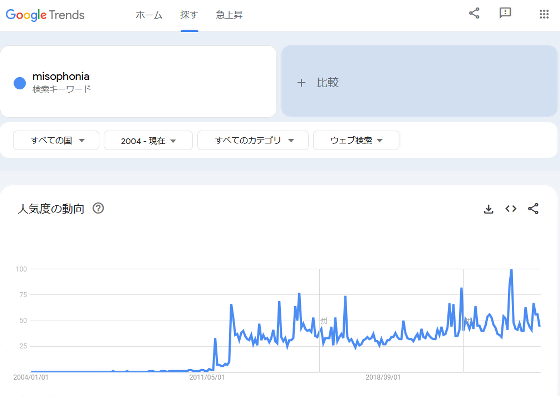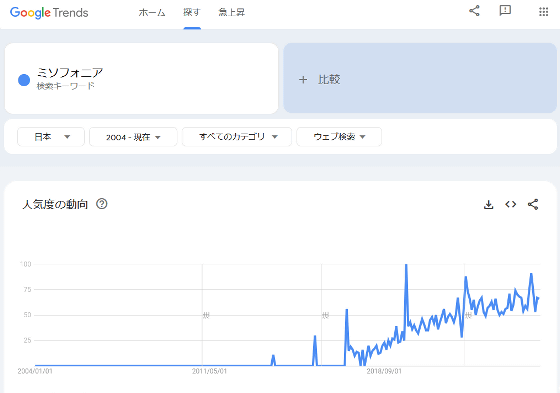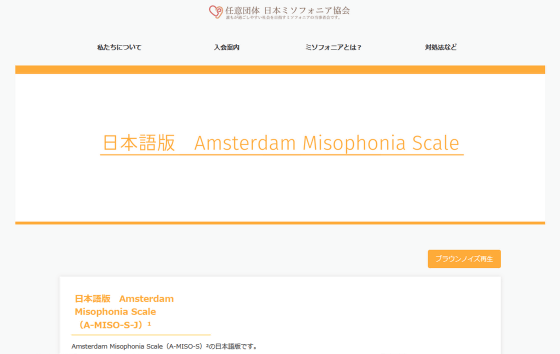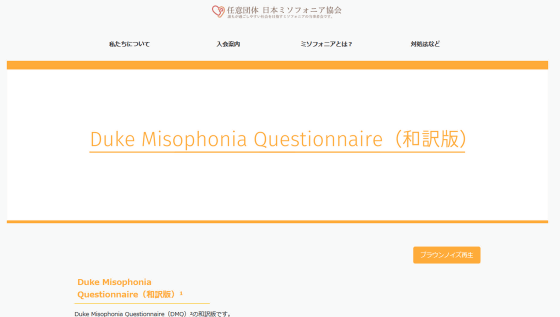People who find chewing sounds or the ticking of a clock annoying may have misophonia

The Unbearable Loudness of Chewing—Asterisk
https://asteriskmag.com/issues/09/the-unbearable-loudness-of-chewing/
The term misophonia has only become widely known since the 2010s. In the United States, many people became aware of misophonia after an article about it was published in the New York Times in September 2011 and a feature on parents and children suffering from misophonia was featured on the popular news program ' 20/20 ' in May 2012. When checking the search demand for the word 'misophonia' on Google Trends, we can see that the number of searches has increased since September 2011.

The trend in search demand for the word 'misophonia' in Japan is shown below. The number of searches has been increasing since around 2017.

In 2013, a paper titled ' Misophonia: Diagnostic Criteria for a New Psychiatric Disorder ' was published in the medical journal PLOS One. This paper showed that the average age at which misophonia develops is 13 years old, and also presented the Amsterdam Misophonia Scale (A-MISO-S) , an assessment scale for misophonia. The A-MISO-S can derive the severity and symptom type of misophonia by asking patients about the types of 'trigger sounds' that cause disgust or anger, and the frequency with which they feel disgust.
A 2017 study using MRI revealed that when misophonia patients heard trigger sounds, activation occurred in the anterior insular cortex, a part of the brain known as the area that influences what people pay attention to .
In 2019, Steve and Diane Miller, whose daughter has been diagnosed with misophonia, established the Misophonia Research Fund (MRF), a foundation to support research into misophonia. Since the establishment of the MRF, research on misophonia has increased, and new assessment scales such as the S-Five and the Duke Misophonia Questionnaire have been created.
Increased research funding has made it possible to conduct larger studies, and in 2024 a study was conducted on 4,005 subjects to assess the prevalence of misophonia . The results showed that 78.5% of subjects had a sensitive reaction to trigger sounds, and 4.6% had a reaction that would be considered diagnostic for misophonia.

Although research findings on misophonia are gradually accumulating, at the time of writing the article, the exact cause of misophonia is not clear. For this reason, further developments in research are expected.
You can also self-check for misophonia using the Japanese version of the A-MISO-S at the link below.
Japanese version of the Amsterdam Misophonia Scale (A-MISO-SJ) | Voluntary organization Japan Misophonia Association
https://misophonia.support/a-miso-sj.html

The Japanese version of the Duke Misophonia Questionnaire is also available.
Duke Misophonia Questionnaire (Japanese translation) | Japan Misophonia Association
https://misophonia.support/dmq-wayaku.html

Related Posts:
in Science, Posted by log1o_hf







